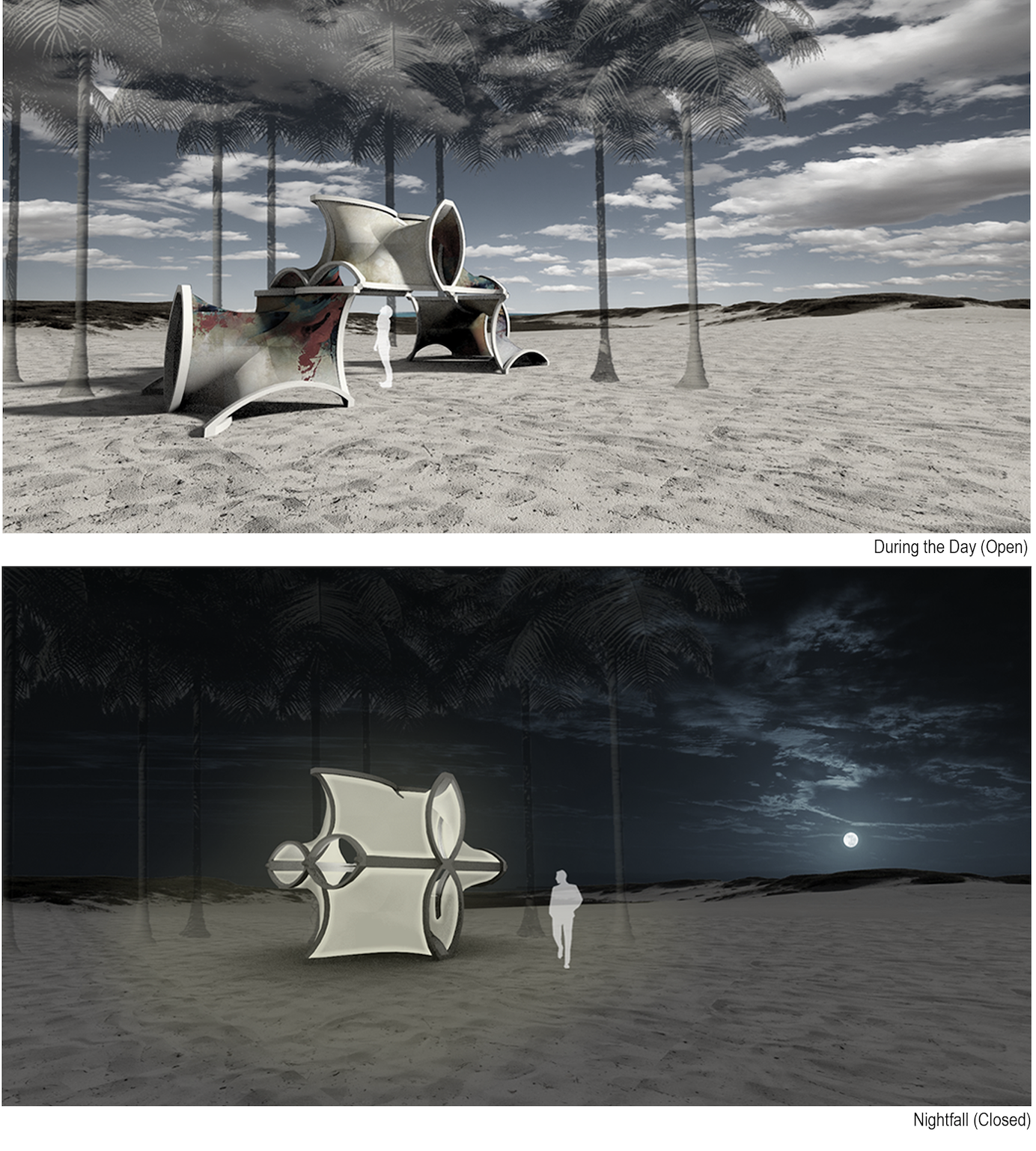“Art Exhibition: Lummus Park”
Ocean Drive, Miami Beach, FL
Gyroid Pavillion
Program:
This studio will develop an architectural and urban proposal to reinvent the Ocean Dr. area. Ocean Dr. was the catalyst of the rebirth of South Beach in the late 1980s. However, more than 25 years later Ocean Dr. has lost its allure and is in a process of clear decline.The studio will work in a section of Lummus Park in front of Ocean Dr., extending from 5th Street to 10th Street. Lummus Park is a 74-acre public Park parallel to Ocean Dr. from 5th to 15th streets in South Beach.
Pedagogy Aim:
This studio has “Biomimicry” approach to find the solution and use “Nature” as a mentor, measure and model to demonstrate functionality, optimization and sustainability. Specific system in structure and architecture could be Form Found through the process of Self-Organization of a material system. The evolution of Form Finding can also be done through series of experiment through bottom-up design process along with physical modeling and simulate the performance through computational processes for the further analysis and optimization.
Project Description:
Biomimicry Approach:
There are two major groups of sand composition, carbonate sand, made of particles of cac03(calcium carbonate) and “siliciclastic sand” rich in silicate mater. The module out of the gyroid is chosen and use that single modules repeatedly thus seeing the different results that can be achieved just by rotating and multiplying. The gyroid shape is more efficient when it comes to compression rather than tension especially when many are compact together.
Form-finding Experiment:
Soap bubbles experiments, inspired by Frei Otto, is defined by creating the wire framework in the shape of the gyroid that is found in the calcite mineral. Student transfer this material system into Fabric (soup film) as tensional element and wood frame (wire framework) as compressional element.
Program and Fabrication Assembly:
The pavilions are consisted of a series of modules that are covered with fabric; that act as a canvas in order to display different artist’s artwork.During the day, these pavilions would be open, allowing visitors to enter into the pavilion and view the artist’s artwork in different ways. Whereas at night, these pavilions transform into a sculpture that not only light up the artwork but as well light up the spaces throughout the park. This allows for visitors to continue viewing the exhibition even at nightfall.
Student: Kevin Redolta & Cindy Rodriguez













